
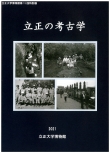
(Period: [Rissho University Museum] March Reiwa 3 (Monday) - March 30th (Tuesday), 2021)
This exhibition displayed historical materials that color the history of research, with the aim of looking back at the progress of excavations and research at Rissho University Archaeology Laboratory and looking ahead to the future.
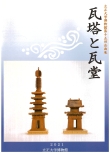
(Period: [Rissho University Museum] Reiwa 3-Reiwa 4)
In order to reconstruct the state of ancient Buddhist faith, particularly in village communities, this exhibition introduced the tiled pagodas and tiled halls in the museum's collection as well as archaeological sites in the surrounding area, mainly in Kumagaya City.

(Period: [Rissho University Museum] Reiwa 2- Monday, March 30, 2020)
This exhibition mainly featured ancient Chinese roofing tiles donated by calligrapher Senba Uyo in 2015, along with Asian and Japanese Buddhist musical implements from the Fuseki-an Collection.
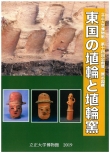
(Period: [Rissho Rissho University Museum] October 30th (Wednesday) - December 13th (Friday), 2019)
In this exhibition, human- and house-shaped haniwa are displayed in a way that allows visitors to simultaneously view the haniwa kiln site, where they were produced, and the materials excavated from the ancient tombs, where they were consumed.
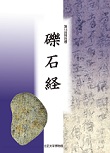
(Dates: [Rissho University Museum] Friday, February 22nd to Thursday, March 28th, 2019)
This exhibition features 29 pebble and stone sutras (one of which was on loan) donated by Mr. Kumano Yuzuru, a resident of Shimonoseki City, Yamaguchi Prefecture, in 2017.
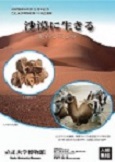
(Dates: [Rissho University Museum] Monday, October 29th, 2018 to Monday, December 17th, 2018, [Shinagawa Campus] Thursday, December 20th, 2018 to the end of April, 2019)
This exhibition showcased the history of Faculty of Geo-Environmental Science, which celebrated its 20th anniversary this year, as well as desert-related materials collected by Professor Emeritus Hiroki Takamura of Faculty of Geo-Environmental Science.
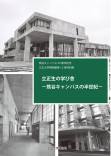
(Dates: [Rissho University Museum] November 1, 2017 (Wed) to January 31, 2018 (Wed), [Shinagawa Campus] February 8, 2018 (Thu) to April 30, 2018 (Mon)
This special exhibition introduced the history and expansion of Rissho University Kumagaya Campus with photographs and drawings, etc. It also displayed materials excavated from archaeological remains on the Kumagaya campus that were unearthed during excavation work conducted in conjunction with the construction of the campus.
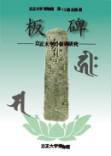
(Dates: [Rissho University Museum] Monday, October 2, 2017 to Saturday, October 28, 2017, [Shinagawa Campus] Wednesday, November 8, 2017 to Wednesday, February 7, 2018)
This exhibition introduced the research of Rissho University 's pioneering stone tablet research, Dr. Ishida Shigesaku and Dr. Kubo Tsuneharu, as well as introducing the stone tablet collection of Dr. Kubo Tsuneharu, which is housed at the museum.
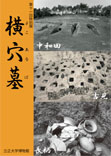
(Dates: [Rissho University Museum] November 28th to December 22nd, 2016, [Shinagawa Campus] January 16th to March 20th, 2017)
The Archaeology Department Rissho University has been investigating and studying cave tombs throughout the Kanto region for many years, beginning with the Bontenyama cave tombs in Hino City, Tokyo in 1973.
This exhibition featured the Yoshimi Hyakuana Cave Tombs (Yoshimi Town, Hiki District, Saitama Prefecture), which are famous in academic history, as well as the Nagara Cave Tombs and the Chiyomaru and Chikaramaru Cave Tombs (Nagara Town, Chosei District, Chiba Prefecture), and the Nakawada Cave Tombs (Tama City, Tokyo), where excavated items will be on display for the first time.
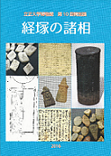
(Dates: [Rissho University Museum] January 15th to February 27th, 2016, [Shinagawa Campus] March 18th to mid-June, 2016)
Sutra mounds, where Buddhist scriptures are buried and where one awaits the future of Maitreya Bodhisattva, who would save all living beings, began to be built during the Heian period, the Latter Day of the Law. As a Buddhist university, Rissho University University has been conducting research into archaeology with Buddhist archaeology as its most important field. This special exhibition displayed various aspects of sutra mounds, focusing on materials related to sutra mounds held by Rissho University Museum. By showing the changing aspects of sutra mounds, from buried sutra mounds of ancient times, to buried and traveling sutra mounds of the Middle Ages, to single-stone sutra mounds and traveling sutra mounds of the early modern period, the wishes of people in each era were made clear.

(Dates: [Shinagawa Campus] June 19th to early November 2015)
Rissho University is a comprehensive university with one of the most traditional Buddhist universities in Japan. The university has conducted surveys of Buddhist ruins overseas, starting from the Tilaura Kot ruins in the Kingdom of Nepal, over a period of 10 years from 1967. This ruins is considered the most likely location of Kapila Fort, where Buddha lived before becoming a monk.
Furthermore, in 2014, we began research at the Kara Tepe ruins in the Republic of Uzbekistan, a region on the Silk Road in Central Asia. The Kara Tepe ruins are the largest Buddhist ruins in the region, and were at their peak from the 1st to 3rd centuries.
This special exhibition focused on past and present research into overseas Buddhist ruins, showcasing the results of each research together with actual materials.

(Dates: [Shinagawa Campus] September 2014 to February of the following year)
From the 1950s to the 1970s, Rissho University Archaeology Department carried out nationwide excavation surveys in connection with the "Archaeological Research on Ancient Ceramics" conducted by Professor Emeritus Shuichi Sakazume, who served as the museum's first director.
The recent exhibition at the Rissho University Museum Shinagawa Campus introduced the results of the "Archaeological Research on Ancient Ceramics" conducted by Rissho University Archaeology Laboratory, along with actual materials.
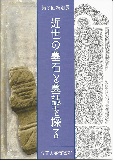
(Dates: [Rissho University Museum] Wednesday, January 28th to Friday, February 27th, 2015, [Shinagawa Campus] Late March to mid-June, 2015)
The exhibition focused on Buddhist artifacts, one of the distinctive features of the materials held by Rissho University Museum, and dealt with gravestones from the Edo period, focusing on materials excavated from the grave of the Ochi Matsudaira family, which was unearthed following the reburial of remains in the grounds of the Nichiren sect Zenshoji temple cemetery.
The Ochi Matsudaira family is a related clan that began with Matsudaira Kiyotake, the younger brother of the 6th Shogun Ienobu, and continued as the lord of the Tatebayashi Domain in Kozuke Province and then the Hama Domain in Iwami Province. The gravestones of the Ochi Matsudaira family are a valuable collection of materials that reveal the actual state of gravestones adopted by specific families.
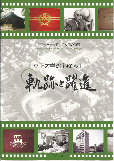
(Dates: [Shinagawa Campus] Tuesday, June 24th, 2014 to Thursday, September 25th, 2014, [Rissho University Museum] Wednesday, November 5th, 2014 to Friday, December 5th, 2014)
This special exhibition was held to commemorate the 90th anniversary of Faculty of Letters Rissho University and the relocation of Faculty of Law to the Shinagawa Campus. Based on the history of Rissho University University, a Buddhist university with the oldest traditions in the Kanto region, the exhibition focused on the history of both faculties, introduced each department, and exhibited photos of classes from the 1950s and 60s.
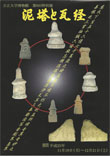
(Dates: Monday, November 18th to Saturday, December 21st, 2013)
We will introduce the "Mud Pagoda" and "Tiled Sutra," Buddhist relics in the possession of Rissho University Museum.
Mud towers are made by cutting mud into a mold, forming it into a tower shape, and then firing it.
A tile sutra is a flat clay slab with a square or rectangular surface on which a sutra is written and then fired. Both are acts of good deeds based on Buddhist faith, and are made with various wishes in mind.
In this special exhibition, we would like to consider the wishes of the people of that time that were contained in the mud pagodas and tile-tiled sutras.
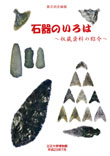
(Dates: July 4th (Mon) - August 6th (Sat), 2011)
Among the materials stored at the Rissho University Museum, the permanent exhibits include materials from surveys conducted by the Archaeology Laboratory Faculty of Letters. In addition to these, the museum will also be introducing new materials excavated from the Honmachida ruins in Machida, Tokyo, and the Ishigami shell mound in Kawaguchi, Saitama.
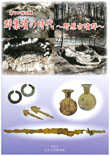
(Dates: Monday, November 29th, 2010 to Saturday, December 25th, 2010)
Cluster tombs are clusters of small kofun. In terms of numbers, they make up the majority of kofun, and are recognized as important entities that cannot be overlooked in research into the late and final kofun culture.
In this exhibition, we will focus on some of the cluster tombs that have been investigated in the Kanto region and shed light on the individual characteristics of each one.
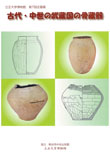
(Dates: Thursday, July 1st to Saturday, July 31st, 2010)
The program focused on the bones and organs held at Rissho University Museum, and also covered the Kasahara ruins in Kawaguchi City, Saitama Prefecture, an ancient cremation grave, and the Chikudoshita ruins in Gyoda City, Saitama Prefecture, an ancient cremation grave.
Let's take a look at ancient and medieval funerals through cremation and bones and organs from each era.
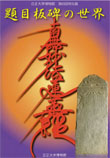
(Dates: November 1st (Sun) to 30th (Mon), 2009)
Stone tablet monuments are a type of stone memorial tower that was popular in the Middle Ages. Kumagaya City, where the Kumagaya Campus is located, is home to a stone tablet monument with the oldest date inscription (1227), and many other stone tablet monuments remain.
This special exhibition will display the monumental stone tablets owned by Rissho University and will also introduce the origins and spread of monumental stone tablets.
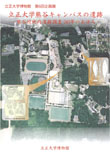
(Dates: July 1st (Wed) - July 31st (Fri), 2009)
We would like to look back on the 30-year history of the Archaeological Investigation Room, display all the artifacts excavated so far, and raise awareness of the archaeological sites on the Kumagaya campus.
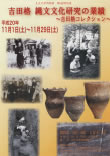
(Dates: November 1st (Saturday) to November 29th (Saturday), 2008)
In 2008, new photographs, illustrations, books, etc. were donated to the "Yoshida Itaru Collection" of materials stored at Rissho University Museum, and this special exhibition introduced the achievements of Yoshida Itaru once again. Yoshida is a researcher who has studied the Jomon period and established the Hanawadai-style and Shomyoji-style pottery that serve as the dating standard, and this special exhibition displayed materials that have not been publicly available until now.
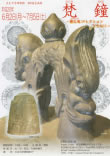
(Dates: Monday, June 2nd, 2008 to Saturday, July 5th, 2008)
This special exhibition introduced the Buseki-an Collection, one of the precious collections at Rissho University Museum. In addition to the existing materials, newly donated materials were also on display, and the exhibition introduced casters from the Middle Ages and early modern periods, mainly in the Kanto region.
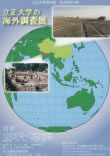
(Dates: Monday, December 3, 2007 to Friday, December 21, 2007)
This special exhibition focuses on the various overseas surveys that Rissho University has conducted to date, including the survey of the Tilaurakot ruins in Nepal, the survey of the Taklimakan Desert by Hiroki Takamura (President Rissho University), and the overseas training programs conducted as part of the field work of the Faculty of Faculty of Buddhist Studies.
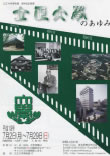
(Dates: Monday, July 2nd, 2007 to Sunday, July 29th, 2007)
This special exhibition was held to coincide with the 5th anniversary of the museum's opening and the 135th anniversary Rissho University, and introduced the history of Rissho University. It introduced, through photographs, the process by which Rissho University. This exhibition also marked the start of the Osaki Campus Traveling Exhibition.
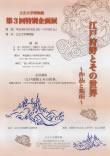
(Dates: Monday, October 16th to Saturday, November 18th, 2006)
Investigations of the Kano family graveyard at Ikegami Honmonji Temple were carried out in 2001 and 2002. Rissho University was involved in both investigations, and this special exhibition, held with the cooperation of Ikegami Honmonji Temple, the head temple of the Nichiren sect, introduced the results of the excavation surveys and related paintings.
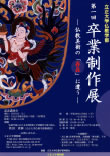
(Dates: Monday, December 6th, 2004 to Saturday, December 18th, 2004)
The first graduation exhibition of Rissho University 's Faculty of Buddhist Studies was held. During the exhibition, a commemorative lecture was held by Assistant Professor Takahiro Akita of Faculty of Buddhist Studies, entitled "Practical classes and graduation projects in Faculty of Buddhist Studies."
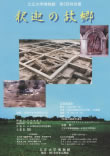
(Dates: Monday, October 25th, 2004 to Saturday, November 27th, 2004)
This special exhibition introduced the results of research carried out by Rissho University in India and Nepal over a ten-year period from 1967 to 1977 at the Tilaurakot ruins in Nepal, which is believed to be the remains of Kapila Fort (the castle where Buddha is said to have lived until he became a monk). The exhibition also introduced the Lumbini ruins, which were surveyed by the All Japan Buddhist Association from 1993 to 2003.
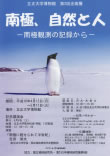
(Dates: Monday, April 12th to Tuesday, May 11th, 2004)
This exhibition introduces "Memories of Antarctic Research Over Half a Century" by Hideo Yoshida, former president of our university, through photographs and documents. Mr. Yoshida participated in seven Antarctic research expeditions as a member, expedition leader, and vice-leader, and this exhibition introduces the photographs and research results of those expeditions.

(Dates: Thursday, October 16th to Saturday, November 15th, 2003)
This special exhibition introduced the results of excavation surveys conducted by the Archaeology Laboratory Rissho University as part of the "Archaeological Research on Ancient Ceramic Industries" from the early 1950s to the mid-1970s. Surveys were conducted in areas ranging from Aomori Prefecture in the north to Fukuoka Prefecture in the south, with a particular focus on eastern Japan, and this special exhibition introduced examples from Saitama Prefecture.
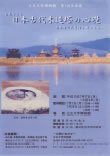
(Dates: July 7th (Mon) - August 4th (Mon), 2003)
This special exhibition focuses on photos of tower core stones donated by Ryuji Iwai, who has been researching the "shinso" (heart stone) that is placed at the center of the "tower" built in a temple. The role of tower core stones and photos of core stones from all over the country were displayed together.